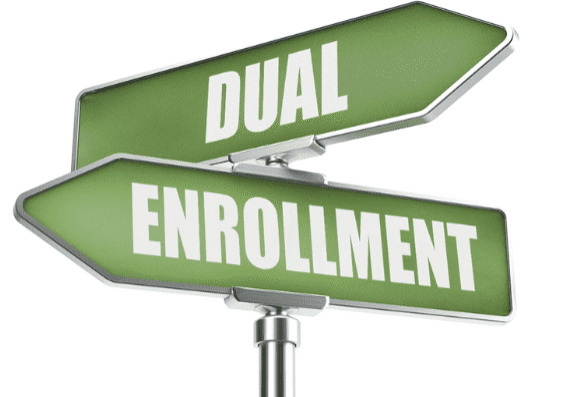There’s a secret weapon high school students have, but not everyone knows about it. (Which is I guess what makes it a secret weapon!) Dual enrollment is taking college-level classes while still in high school, but earning both high school and college credit for them. Some are available at a student’s high school, but many can be taken on a college campus or even completed remotely. Double-the-credit isn’t the only benefit, however.
Save Big Bucks: Dual enrollment lets you get a head-start on college credits at a fraction of the cost you’d pay while directly enrolled at a university or college.
The Time Warp Factor: Transferred credits can unlock exciting possibilities. Imagine graduating high school early, or being able to take more electives, or having more time to participate in extracurriculars, or even being able to more easily double-major in college.
Academic Advantage: Knock out those pesky required college courses early, entering college prepped and ready to tackle more advanced subjects (or subjects you find more exciting!). You could potentially even graduate faster as a result.
Explore Your Possibilities: Unsure about your major? Dual enrollment lets you test-drive different subjects without the commitment or cost associated with full-time college courses. Discover hidden passions and future career paths.
College Prep: Dual enrollment classes are typically more rigorous than the standard high school curriculum. This prepares you for the challenges of collegiate-level academics, letting you hone your study habits, improve time-management skills, and learn to balance responsibility.achieve your goals.
Dual Enrollment vs. AP & IB
Confused about the difference between dual enrollment, AP, and IB classes? Here’s a breakdown:
- AP (Advanced Placement): College-level courses, but you earn credit by scoring high on an exam.
- IB (International Baccalaureate): Offers individual subjects or two-year diploma program, with exams.
- Dual Enrollment: College-level courses that automatically grant credit upon successful completion, which are transferable to most colleges.
While all three options are great prep for college, dual enrollment has some unique advantages:
More Tailored: AP and IB have set curricula. Dual enrollment offers flexibility, allowing you to explore specific interests.
Less Intense: AP and IB are known for their high-pressure exams. Dual enrollment might be less stressful, especially if you have test anxiety.
College Vibes: Some dual enrollment classes are held on college campuses, giving you a sneak peek into what college life is really like.
Accelerated Graduation: Dual enrollment credits are more likely to translate to actual college courses, potentially helping you finish your degree in less than four years.
Dual enrollment is a power-up for your academic journey. From saving money to exploring passions, it helps you become a better student and get a head start on your dreams. Check with your school counselor and see if dual enrollment is an option for you. And remember that the best dual enrollment classes are the ones that fit your needs. Whether it’s a general, core class or a niche subject that speaks to your interests, the key is to choose what helps you achieve your goals

